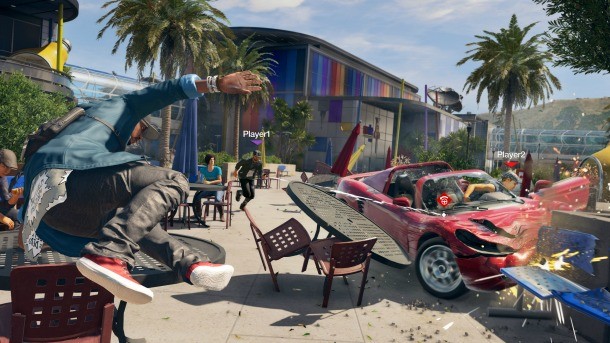Our extra-large special edition is here. Subscribe today and receive the 25% longer issue at no extra cost!
Afterwords – Watch Dogs 2

Watch Dogs 2 improves on much of what the first game lacked, with a vibrant new setting of San Francisco and a more interesting protagonist named Marcus Holloway. We spoke to senior producer Dominic Guay of Ubisoft about the ups and downs of the game's development. You can read our review of Watch Dogs 2 by heading here.
Many thought the original Watch Dogs had its share of flaws. Was there a lot of pressure to address the issues of the first game?
You always want to make the best possible game. The team is driven by passion. We are gamers too. We listened to the feedback and definitely considered it in our decision making process. It is not to say that we were reacting solely to that feedback, but we definitely considered both what various people liked and disliked in the original game.
Was there much debate amongst the team about including Ubisoft’s San Francisco office in the game and how far down that rabbit hole to go?
That was an idea we had in early conception of the game. WD 2 focuses on hacking – if we are going to allow the player to hack so many things in the city we should also allow them to hack a virtual Ubisoft. We found it healthy to poke a little fun at ourselves, to not put ourselves above others.
Were there ever any considerations for ditching guns altogether?
It is true that Marcus, the character, would not generally use lethal approaches. You do not see him handling guns or shooting people in [cutscenes] or in any forced narrative moments. We wanted missions to fully support hacking approaches, stealth, non-lethal weapons and trickster tactics. With that said, we wanted to give the player that choice. We wanted to maintain a viable approach through aggression for players who wished to take this course. What we saw in internal playtests is that players would find their own favorite play styles to approach challenges and each were enjoyed by different players. Often, the same players would change their tactics based not only on what worked for them, but also on what felt right at the moment. If you think about it, it’s interesting to have a player choose an approach based on their feelings instead of being forced into it or simply maximizing efficiency. We are very much aware that there is definitely more to explore in this area – in how to match player agency without creating possible friction between the mechanics and the narrative.
What story beats or mechanics in the game did you have mapped out and then were surprised when during the game’s development that they ended up mirroring real-world events?
Mechanically we based most of them on things that were already seen, for example hacking cars remotely. I lost count of all the ATM hacking articles we saw during production. Narratively, we did go in some “what if” territory that ended up in the newspapers before we shipped. That was sometimes uncanny. Our storyline about the potential of social media platforms to manipulate voting was partly reflected by both parties during the latest U.S. election. The “pre-crime” programs we explored also saw a significant increase in popularity in many cities worldwide. Watching promotional videos on new home automation or smart city technologies always feels strangely like in-game videos to us. But above all else, it is the recent news on how various data brokers (both legal and illegal) deal with our personal information and histories that have been the most impressive to us.
What are some of the unexpected or wacky hacks players have experimented with that you’ve come across so far?
Players are creative! Sometimes it comes from the simplest of things. For example, using the flying drone as a platform so the jumper drone can reach higher places. Last week I saw a video of someone who had piled up a huge pyramid of cars using a lift to reach a high point with Marcus… or attracting a few A.I. in a room and then locking the door, trapping them. The craftiest players are starting to mix A.I. manipulation, car hacking and traps to clear layouts without ever setting foot in the restricted area.
A lot of the fun interactions also come from the multiplayer. Approaching from scissor lifts used as a mobile platform, bombing campers with drones, countering drones using Mass Communication Disrupt to break the drone control and shoot them down before the user could regain control. One of our designers was not aware of that last combo!
There is a lot of diversity in Watch Dogs 2, from a black protagonist to a trans character. Did you feel it was important for the game to be inclusive and diverse?
It is true to our subject matter: The Bay Area is a diverse place, and we built characters that were inspired by the diversity of our world. It was very important for the team to be inclusive and represent the diversity of the real world.
Was there a lot of research that went into building Josh as an autistic character?
You can find an audio log made by Horatio in the main hackerspace where he mentions that Josh is high-functioning autistic. But Josh is multi-dimensional and we do not want to label him. The creative team, writers, and actors did extensive research to make sure we built a character that was grounded in reality. I personally care a lot for this character and so do many people on the dev team.

Get the Game Informer Print Edition!
Explore your favorite games in premium print format, delivered to your door.
- 10 issues per year
- Only $4.80 per issue
- Full digital magazine archive access
- Since 1991









